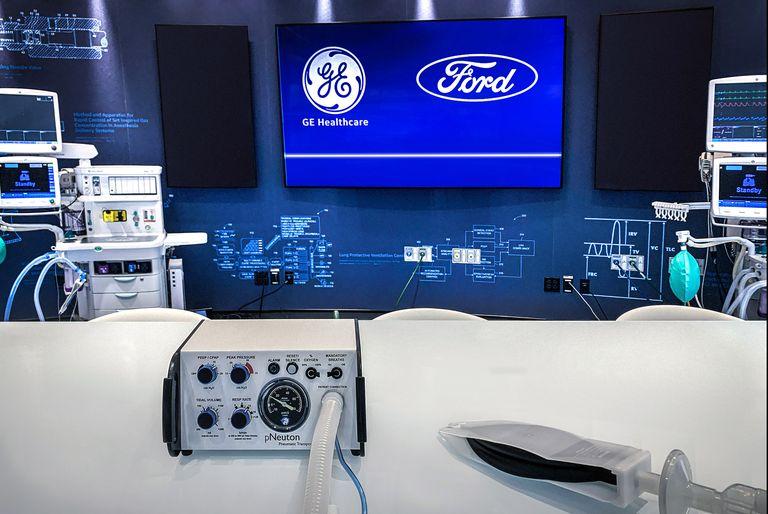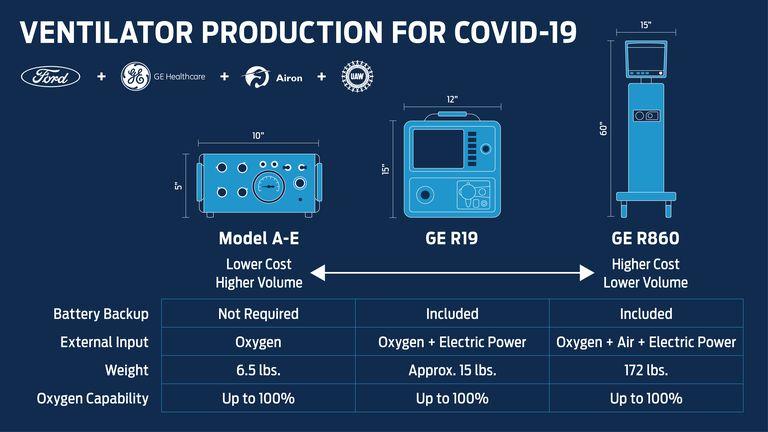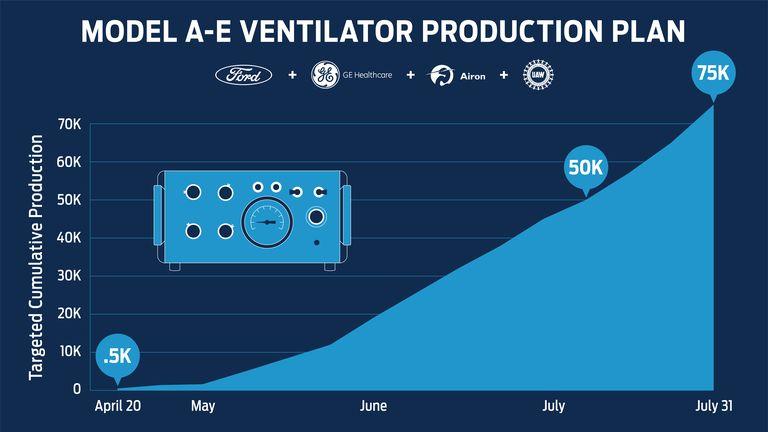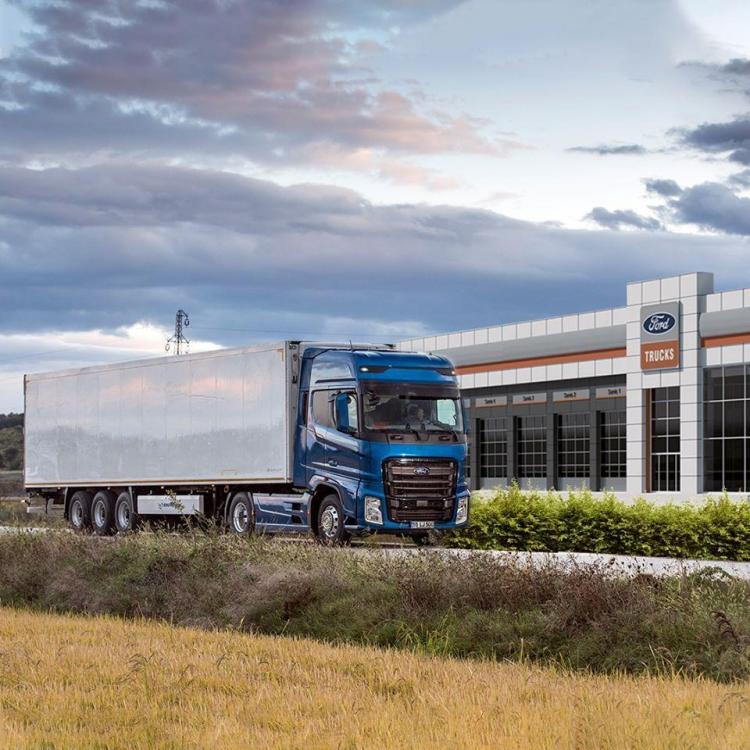
kscarbel2
Moderator-
Posts
18,539 -
Joined
-
Days Won
112
Content Type
Profiles
Forums
Gallery
Events
Blogs
BMT Wiki
Collections
Store
Everything posted by kscarbel2
-
Today, the White House was more upfront than anytime before on what they know of the Coronavirus, stating that 100,000 to 240,000 people might perish. Unlike previous briefings. the tone was serious, somber and grim. The president warned America to brace for a “very, very painful two weeks” "I want every American to be prepared for the hard days that lie ahead. We're going to go through a very tough two weeks," Trump said. “It’s absolutely critical for the American people to follow the guidelines for the next 30 days. It’s a matter of life and death.” White House coronavirus coordinator Deborah Birx displayed charts demonstrating data and modeling that showed an enormous jump in deaths to a range of 100,000 to 240,000 people from the virus in the coming months even with mitigation measures in place. Asked if Americans should be prepared for the likelihood that 100,000 will die from this virus, Dr Anthony Fauci, director of the National Institute of Allergy and Infectious Diseases, said: “The answer is yes. As sobering a number as that is, we should be prepared for it." .
-
Landi Renzo Receives CNG Certification for Ford 7.3L Engine Heavy Duty Trucking (HDT) / March 27, 2020 Landi Renzo USA received U.S. Environmental Protection Agency (EPA) certification on compressed natural gas (CNG) for the Ford 7.3L engine covering Class 4-7 vehicles. These Ford vehicles are included in the EPA certification: F-450/550 F-650/750 F-53/59 E-450 The Landi Renzo USA eco-fuel CNG system for the 7.3L engine is used in airport and hotel shuttle buses, delivery trucks, service trucks, large package trucks, as well as other vocational offerings. Many of these vehicles will be able to take advantage of various grant funding opportunities, according to Landi Renzo. "Our EPA certification is result of the tremendous work of many individuals. We also want to recognize Ford's support in helping us produce a world class CNG product," said Paul Shaffer, EVP for Landi Renzo USA. During this 18-month effort, Landi Renzo USA conducted extensive engine and vehicle testing to meet the stringent Ford Q-185 gaseous prep guidelines and demonstrate full useful life durability. CARB certification on the 7.3L is expected in late Q2 2020. Landi Renzo USA is approved as a Ford QVM System Developer and Installer for gaseous fuels, offering the largest selection of eco-fuel systems for commercial fleets. By fleets utilizing the Landi Renzo USA system, the Ford warranty remains fully in place.
-
Ford Trucks International Press Release / March 27, 2020 Ford Trucks' Active Emergency Brake System (AEBS) measures the distance from the vehicle in front and brakes in an emergency to ensure that the vehicle slows down safely. We developed this technology for your safety on the road. Now it’s your turn to keep your 1.5 meter social distance with the people around you to protect yourself from Covid-19 and stay healthy & safe. .
-
Vehicle Disinfection Before Driving I Ford Trucks
kscarbel2 replied to kscarbel2's topic in Trucking News
Ford Trucks sets the benchmark for promoting trucking safety during the Coronavirus outbreak. -
Ford Trucks Safety Notice Release / March 31, 2020 We remind you of the essential points to disinfect just before you get in your vehicle. .
-
Political parties should be banned, because they are a massive distraction. Elected government officials should only speak for themselves and their populace.
-
Bloomberg / March 31, 2020 President Trump called on Congress to provide $2 trillion for U.S. infrastructure, seizing on the coronavirus outbreak to try once again to advance one of his longest-standing priorities. Trump said Tuesday that timing is good for a massive infrastructure bill -- a measure to fund construction and repairs of roads, bridges, railroads or other public works projects -- because interest rates are close to zero. Trump has long advocated for an infrastructure plan but has never settled on how to finance it. His new push comes as the number of Americans filing for unemployment benefits is forecast to set a record for the second straight week, following 3.28 million in last week’s data. The darkest predictions are for that figure to almost double, the result of business closures and government efforts to keep people at home to prevent spreading the virus. The American Society of Civil Engineers has said more than $2 trillion in additional funding is needed for U.S. infrastructure by 2025 alone. The World Economic Forum this year ranked the U.S. 13th in matters of infrastructure, according to its global competitiveness report. Nations listed higher included Singapore, Hong Kong, Switzerland, Japan, Korea and Spain. The White House and Congress have begun circling the idea of a fourth round of stimulus to combat economic fallout from the coronavirus outbreak. Both Trump and House Speaker Nancy Pelosi have begun floating ideas for such a measure, just days after Trump signed a $2 trillion bill. Trump pledged in his 2016 campaign to seek $1 trillion in infrastructure spending and called on Congress in his 2018 State of the Union address to dedicate $1.5 trillion in new investment. But the plan Trump proposed in 2018 went nowhere because of disagreement over how much federal funding would be included. Any hopes for a federal bill ended last May when Democrats said the president walked out of a meeting on a $2 trillion proposal and vowed not to work with them unless they stopped investigating him and his administration. Lawmakers who attended a closed-door meeting with Trump in February 2018 said he told them he’d support a 25-cent per-gallon increase in gas taxes, but Trump never publicly endorsed the idea. The plan drew opposition from Republicans who don’t want to raise taxes and Democrats worried about the impact on low-income residents.
-
Ford indefinitely delays reopening N.A. plants; third worker death reported Michael Martinez, Automotive News / March 31, 2020 DETROIT -- Ford Motor Co. is postponing for a second time the reopening of its North American manufacturing facilities amid the global surge in coronavirus cases. The automaker said Tuesday it will indefinitely delay the restart of production at plants in Mexico, Canada and the United States and refused to offer a restart date. It was previously aiming to begin work at Hermosillo Assembly in Mexico on April 6 and a handful of U.S. plants on April 14. Those dates came after it pushed back original projections of returning to work March 30. "The health and safety of our workforce, dealers, customers, partners and communities remains our highest priority," said Kumar Galhotra, Ford president, North America. "We are working very closely with union leaders -- especially at the UAW -- to develop additional health and safety procedures aimed at helping keep our workforce safe and healthy." Meanwhile Tuesday, Ford and the UAW confirmed that a third union worker has died from the virus. The employee worked at Dearborn Diversified in southeastern Michigan, according to the union. "It is a tragic reminder that the coronavirus crisis is everywhere and requires the attention of all of us,” a Ford spokeswoman said. “Our thoughts are with their families, friends and co-workers during this difficult time." Ford and the union over the weekend confirmed two other employees had died from the virus: a worker at Dearborn Stamping, which was among the plants slated to reopen April 14, and a skilled trades member of the Ford Data Center in Dearborn, Mich. "Today's decision by Ford is the right decision for our members, their families and our nation," UAW President Rory Gamble said. "Under Vice President Gerald Kariem, the UAW Ford Department continues to work closely with our local unions and Ford to make sure that as we return to production all members are safe, and our communities are protected from this spreading pandemic." Gamble and union leaders originally pushed the Detroit 3 automakers to shutter their plants earlier this month. Gamble also expressed concern when that target was announced. Despite the indefinite closure, Ford will open its Rawsonville Components Plant in Ypsilanti, Mich., the week of April 20 to begin production of ventilators in partnership with GE Healthcare. The automaker will use 500 paid UAW volunteers on 3 shifts to build 50,000 ventilators by July 4, then 30,000 per month after that. Coronavirus Plant Closings - https://www.autonews.com/topic/coronavirus-plant-closings
-
Car & Driver / March 30, 2020 Ford and GE Healthcare announced a collaboration today to begin production of ventilators beginning the week of April 20. Together, they plan on building 50,000 of the systems in the following 100 days, or by July 4. The ventilators will be built at Ford's Rawsonville plant in Ypsilanti, where 500 United Auto Worker employees will construct them, working 24 hours a day to hit the production goal. The companies aim to produce the first 1500 ventilators by the end of April. “The Ford and GE Healthcare teams, working creatively and tirelessly, have found a way to produce this vitally needed ventilator quickly and in meaningful numbers,” Jim Hackett, Ford’s CEO, said in a statement. “By producing this ventilator in Michigan, in strong partnership with the UAW, we can help health care workers save lives, and that’s our No. 1 priority.” .
-
Ford aims to start making ventilators with GE in 3 weeks Reuters / March 30, 2020 Ford said on Monday it will produce 50,000 ventilators over the next 100 days at a plant in Michigan in cooperation with General Electric’s healthcare unit, and can then build 30,000 per month as needed to treat patients afflicted with the coronavirus. Ford said the simplified ventilator design, which is licensed by GE Healthcare from Florida-based Airon Corp and has been cleared by the Food and Drug Administration (FDA), can meet the needs of most COVID-19 patients and relies on air pressure without the need for electricity.
-
Paccar shutting down truck, engine plants around the world
kscarbel2 posted a topic in Trucking News
Jason Cannon, Commercial Carrier Journal (CCJ) / March 24, 2020 Paccar plans to suspend truck and engine production at its factories worldwide for more than two weeks due to the economic fallout from the global coronavirus pandemic, the company announced Tuesday morning. Truck and engine production will be halted effective today through April 6, 2020, but Paccar said it “will continue to provide aftermarket support to its customers who deliver essential infrastructure services to our communities.” -
Ford Trucks Spain / March 30, 2020 The Ford Trucks Spain dealer network remains operational to meet the needs of transport professionals who continue to do a fantastic job at this difficult time. We leave you a list with the phones and emergency emails and 24 hour service: https://lnkd.in/dx93GsP. We are at your service. .
-
The news would indicate they didn't refuse. The politicians that engineered the GM bailout deceived the American taxpayer, knowing they were never going to be paid back in full.
-
The Coronavirus illustrates the massive mistake of allowing "big business" to offshore the production of vital products, be it masks, gloves or medicine.
-
West Texas Intermediate (WTI) reached an 18-year low overnight of $19.92. I expect WTI to fall to the low teens, worsening a disaster for the U.S. energy sector.
-
Good news. The U.S. Food & Drug Administration (FDA) has issued an emergency use authorization for the drugs Hydroxychloroquine and Azithromycin to be taken together in treatment of the Coronavirus. https://www.france24.com/en/20200330-us-fda-gives-emergency-approval-of-anti-malaria-drugs-chloroquine-hydroxychloroquine-for-coronavirus
-
I believe that if an adequate supply of masks were available, which isn't the case, that would play a major role in reducing the "spread". https://www.nytimes.com/interactive/2020/world/coronavirus-maps.html
-
When you approached your Mack dealer with those part numbers, what did they say? Your Mack dealer sells new Mack parts.
-
The Detroit Auto Show has been canceled. The venue, COBO center, is being converted into a Coronavirus field hospital. Many car dealers, after already shuttering showrooms, are now sending the remaining employees home (putting workers on standby unemployment).
-
Both warm climate Singapore and Indonesia are seeing the virus. If that means the warm summer weather in the US will not subdue it, buying us more time for vaccine and drug treatment development, I am extremely concerned. Again, China beat this by making everyone stay home (compartmentalizing). It works. But other countries have been reluctant to go to that extreme. Everyone should wear a mask when they're around others, to prevent transmission. I suspect the reason the government oddly proclaimed masks don't help is because of the massive shortage..........they just barely have enough for medical staff. Masks do help, I can tell you. In the US, people think you must have something if you're wearing a mask. In Asia, they think you're attempting to avoid catching something by wearing a mask. ------------------------------------------------------------------------------ President Trump reversed himself on Sunday, extending national social-distancing guidelines to April 30 in effort to avoid a major death toll. The president pointed to modeling that forecast 2.2 million deaths in the U.S. if drastic measures weren't taken. Trump is working to keep the projected death toll below 100,000. "So if we can hold that down, as we're saying, to 100,000, it's a horrible number, maybe even less, but to 100,000, so we have between 100 and 200,000, we all together have done a very good job," Trump said. White House health adviser Dr. Anthony Fauci says the US could see up to 200,000 deaths, and millions of infections.
-
This is a tough subject. Obviously I respect your thoughts, your ethics, morals and values. If my daughter was raped (heaven forbid), I would support her choice for an early termination. We'd rather she gave birth to a child fathered by her chosen husband.
-
My gut tells me we are not being told the full story, the exact truth, about the virus. But certainly the world leaders know. I imagine truth would be a catalyst for the panic they don't want.
-
Does anyone have a link on Cuomo having 100,000 ventilators in a warehouse? Fake news? I only see there are an estimated 100,000 units nationwide..................https://www.marketwatch.com/story/soaring-demand-for-ventilators-creates-political-tension-promises-to-ramp-up-manufacturing-2020-03-25
-
I have some experience with this. Using December 31 as a reference point, when the Wuhan hospitals began treating cases, it's far colder than 85 degrees F there. On that day, the high was 45 and the low 36. https://weather.com/weather/monthly/l/2637660151899903e8cbdd23636051470b6731863286ec74b3033421cb87e1e8
BigMackTrucks.com
BigMackTrucks.com is a support forum for antique, classic and modern Mack Trucks! The forum is owned and maintained by Watt's Truck Center, Inc. an independent, full service Mack dealer. The forums are not affiliated with Mack Trucks, Inc.
Our Vendors and Advertisers
Thank you for your support!








